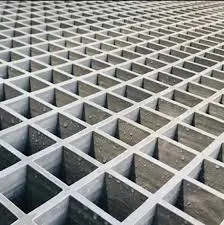
-
 Afrikaans
Afrikaans -
 Albanian
Albanian -
 Amharic
Amharic -
 Arabic
Arabic -
 Armenian
Armenian -
 Azerbaijani
Azerbaijani -
 Basque
Basque -
 Belarusian
Belarusian -
 Bengali
Bengali -
 Bosnian
Bosnian -
 Bulgarian
Bulgarian -
 Catalan
Catalan -
 Cebuano
Cebuano -
 China
China -
 China (Taiwan)
China (Taiwan) -
 Corsican
Corsican -
 Croatian
Croatian -
 Czech
Czech -
 Danish
Danish -
 Dutch
Dutch -
 English
English -
 Esperanto
Esperanto -
 Estonian
Estonian -
 Finnish
Finnish -
 French
French -
 Frisian
Frisian -
 Galician
Galician -
 Georgian
Georgian -
 German
German -
 Greek
Greek -
 Gujarati
Gujarati -
 Haitian Creole
Haitian Creole -
 hausa
hausa -
 hawaiian
hawaiian -
 Hebrew
Hebrew -
 Hindi
Hindi -
 Miao
Miao -
 Hungarian
Hungarian -
 Icelandic
Icelandic -
 igbo
igbo -
 Indonesian
Indonesian -
 irish
irish -
 Italian
Italian -
 Japanese
Japanese -
 Javanese
Javanese -
 Kannada
Kannada -
 kazakh
kazakh -
 Khmer
Khmer -
 Rwandese
Rwandese -
 Korean
Korean -
 Kurdish
Kurdish -
 Kyrgyz
Kyrgyz -
 Lao
Lao -
 Latin
Latin -
 Latvian
Latvian -
 Lithuanian
Lithuanian -
 Luxembourgish
Luxembourgish -
 Macedonian
Macedonian -
 Malgashi
Malgashi -
 Malay
Malay -
 Malayalam
Malayalam -
 Maltese
Maltese -
 Maori
Maori -
 Marathi
Marathi -
 Mongolian
Mongolian -
 Myanmar
Myanmar -
 Nepali
Nepali -
 Norwegian
Norwegian -
 Norwegian
Norwegian -
 Occitan
Occitan -
 Pashto
Pashto -
 Persian
Persian -
 Polish
Polish -
 Portuguese
Portuguese -
 Punjabi
Punjabi -
 Romanian
Romanian -
 Russian
Russian -
 Samoan
Samoan -
 Scottish Gaelic
Scottish Gaelic -
 Serbian
Serbian -
 Sesotho
Sesotho -
 Shona
Shona -
 Sindhi
Sindhi -
 Sinhala
Sinhala -
 Slovak
Slovak -
 Slovenian
Slovenian -
 Somali
Somali -
 Spanish
Spanish -
 Sundanese
Sundanese -
 Swahili
Swahili -
 Swedish
Swedish -
 Tagalog
Tagalog -
 Tajik
Tajik -
 Tamil
Tamil -
 Tatar
Tatar -
 Telugu
Telugu -
 Thai
Thai -
 Turkish
Turkish -
 Turkmen
Turkmen -
 Ukrainian
Ukrainian -
 Urdu
Urdu -
 Uighur
Uighur -
 Uzbek
Uzbek -
 Vietnamese
Vietnamese -
 Welsh
Welsh -
 Bantu
Bantu -
 Yiddish
Yiddish -
 Yoruba
Yoruba -
 Zulu
Zulu
frp winding machine
Understanding FRP Winding Machines
Fiber Reinforced Polymer (FRP) winding machines play a pivotal role in the manufacturing of composite materials, which are increasingly utilized across various industries, including aerospace, automotive, and construction. These machines are designed to wind fiber materials around a core, allowing for the creation of strong, lightweight components that exhibit superior performance characteristics.
Understanding FRP Winding Machines
One of the primary advantages of using an FRP winding machine is the efficiency and precision it offers. Advanced machines are equipped with automated systems that ensure consistent tension and angle during the winding process. This precision is vital for achieving uniformity in the material, which directly affects the strength and durability of the finished product. Automated machines can increase production rates, lower labor costs, and minimize human error, making them an attractive investment for manufacturers.
frp winding machine

In terms of design, FRP winding machines can be tailored to accommodate different shapes and sizes of cores. Some machines are versatile enough to handle complex geometries, which is essential for applications in the aerospace sector where components often have intricate designs. Additionally, technology in this field is continually evolving, with innovations such as computer numerical control (CNC) systems enhancing the capabilities of winding machines further.
Safety is another important consideration in the operation of FRP winding machines. The handling of fibers and resins can pose health risks, so manufacturers must implement strict safety protocols. Proper ventilation, personal protective equipment (PPE), and regular maintenance of machinery ensure a safe working environment.
Moreover, the sustainability of FRP materials is gaining attention. Manufacturers are now exploring bio-resins and recyclable fibers to reduce the ecological footprint of FRP components. This shift not only supports environmental goals but also aligns with increasing consumer demand for sustainable products.
In conclusion, FRP winding machines are indispensable in the production of high-performance composite materials. Their efficiency, precision, and adaptability make them a cornerstone in various industries, paving the way for innovations that contribute to more sustainable manufacturing practices. As technology advances, the future of FRP winding machines looks promising, promising enhanced performance and environmental responsibility.









